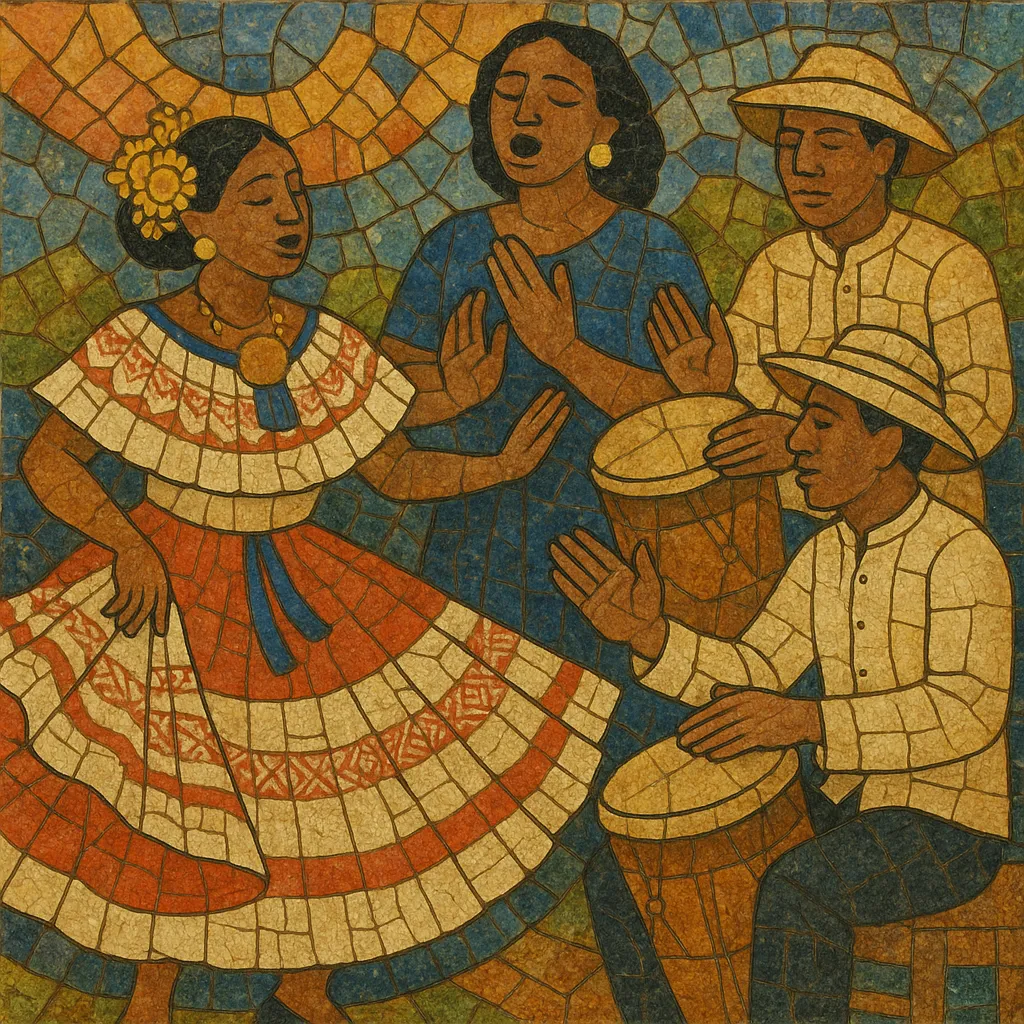Tamborito is a traditional Afro‑Iberian song-and-dance form from Panama often called the country’s “national dance.” It combines call‑and‑response singing led by a cantadora (lead female singer) with a chorus that answers in short refrains, all propelled by a hand‑drum ensemble and rhythmic handclaps.
The music typically sits in a duple meter with lively cross‑rhythms and hemiola-like interplay between the drums and clapping. Lyrics, frequently structured as short stanzas akin to Spanish coplas, move between playful courtship, social commentary, and festive celebration. Performances are communal: singers, drummers, clappers, and dancers in pollera and montuno dress form a ring, turning the piece into a participatory cultural ritual as much as a musical composition.
Tamborito emerged along Panama’s Pacific coast during the colonial period as a cultural synthesis of Iberian poetic song forms and Afro‑diasporic rhythm and performance practice. Spanish strophic verse (notably the copla) provided the textual and formal backbone, while West and Central African drumming traditions, call‑and‑response, and communal ring‑dance aesthetics shaped the music’s feel and its participatory character.
By the 19th century, tamborito had become a central feature of local fiestas, patron‑saint festivities, and community gatherings, particularly in the Azuero Peninsula (Los Santos and Herrera provinces). The roles of the cantadora, the answering coro, and a three‑drum ensemble (commonly caja, repicador, and pujador) were standardized. Handclaps (palmoteo) and audience interaction reinforced its social dimension, making tamborito both entertainment and a vehicle of neighborhood identity.
In the 20th century, Panamanian folklorists and musicologists—among them Narciso Garay and the team of Manuel F. Zárate and Dora Pérez de Zárate—documented and promoted tamborito as emblematic of the nation’s mixed heritage. Stage presentations and folkloric ballets helped codify choreography and costume, while recordings and radio broadened its reach beyond local fiestas.
Today tamborito remains a living tradition performed at festivals (notably in the Azuero region and at national folklore events), in schools, and on professional stages. Its rhythmic language and performance format informed later Panamanian popular styles, and it directly seeded the mid‑20th‑century big‑band fusion style known as tamborera. Despite modernization, tamborito endures as a participatory, community‑rooted practice that symbolizes Panamanian identity.


